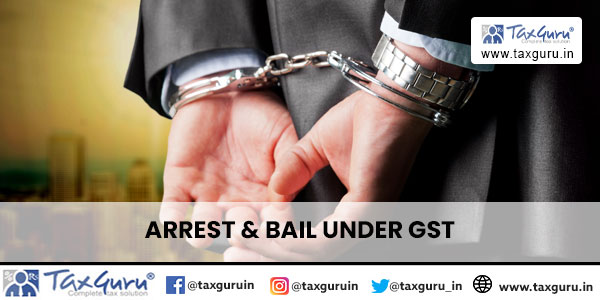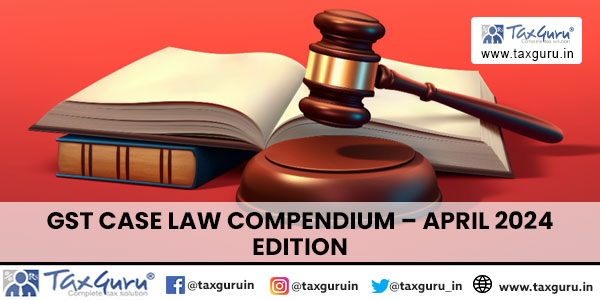Case Law Details
ITO Vs. M/s Nupur Carpets Pvt. Ltd. (ITAT Kolkata)
We note that the AO treated net ‘surplus’ as business income instead of capital gains on the ground that the assessee carried out business of share trading as evident from large volume of transactions and systematic, organized, repeated and regular activity in shares with a clear intention to earn huge profits. But the facts suggests that the assessee- company was holding shares as investment all along and that the initial intention was evident by way the entries made in books and valuation of shares at ‘cost’ and that the volume of transactions was low and that substantial dividend income earned reflecting the intention. Thus, according to assessee the net surplus was not a business income but on account of capital gain. To decide whether a transaction is in the nature of ‘investment’ or ‘trading’ the crucial test that laid down by various courts is that the ‘intention’ of the assessee at the time of purchase of shares. The AO on the other hand, was on the conduct of the business of the assessee which according to him carried out in a systematic and organized manner involving large volumes of transactions in shares. As seen from the principles laid down by various courts, the main test prescribed is the ‘initial intention’ of the assessee to decide whether an activity amounts to ‘trading activity’ or ‘investment activity’. As seen from the above facts, the assessee is justified in its argument that its original initial intention is to hold the shares as ‘investments’ and not as ‘stock-in-trade’. The intention of the assessee as is evident from the circumstances at the time of purchase of shares/units, is a relevant factor and often a conclusive factor in determining whether a transaction is in the nature of trade or in the nature of investment. The assessee had been keeping its holdings in certain companies from a few months to a few years, which clearly indicates that the motive and intention of the assessee is to earn returns in the form of capital gain apart from dividend income. We note that the sources for acquisition of shares are from share capital, reserves and surplus funds. The assessee has been an investor and not a trader as seen from the intention of the assessee. The treatment given in the books under the head ‘investment’ clearly shows that the assessee’s intention to deal in shares as investment. The conversion of investment into stock-in-trade and continuing the trading under that head and again converting the closing stock under that head into ‘investment’, under consideration amounts to a clear change of intention depending on the circumstances. The assessee maintained separate ledger accounts in respect of conversion of stock-in-trade into investment. By converting the stock-in-trade into investment, it does not alter the character, nature and intention of that particular transaction especially in the context of capital gain versus business income. Subsequent conversion and treatment given in the books of accounts do not alter the character of commercial transaction. Accordingly, the profit that has been attributable to this trading activity corresponding to conversion of stock-in-trade into investment is to be treated as ‘business income’ and accordingly to be taxed. In view of the above findings of CIT(A) that the income from investment is to be taken as ‘capital gains’ and conversion of stock-in-trade to investment is to be taken as ‘trading income’, which is based on facts of the case and need no disturbance. In addition to this, the assessee`s case under consideration is fully covered by the Jurisdictional ITAT Kolkata, in ITA No. 783/Kol/2009, A.Y 2005-06 (supra). Thus, respectfully following the decision of the Coordinate Bench in assessee`s own case, vide ITA No.783/Kol/2009, A.Y 2005-06 (supra),in the assessment year 2005-06, whereby the issues were decided in favor of the assessee company, as set out above, therefore we confirm the findings of CIT(A).
FULL TEXT OF THE ITAT ORDER IS AS FOLLOWS:-
The captioned appeal filed by the Revenue, pertaining to assessment year 2007-08, is directed against the order passed by the ld. Commissioner of Income Tax (Appeals)–4, Kolkata in Appeal No. 195/CIT(A)-4/Cir-12/Kol/14-15, dated 17.12.2015, which in turn arises out of an order passed by the Assessing Officer u/s.147/143(3) of the Income Tax Act 1961, (hereinafter referred to as the ‘Act’), dated 01 .03.2013.2. The grounds of appeal raised by the Revenue read as under:
1. That on the facts and circumstances of the case, the Ld. CIT(A) has erred by ignoring that the assessee kept on changing as per its own liberty to convert stock-in-trade to investment and vice versa year to year as per its convenience specially, when the assessee failed to adhere to any reasonable basis and fails to apply any definite method of categorizing the income whereas the provisions on I. T. Act are differently applicable on business and on investment.
2. That on the facts and circumstances of the case, the Ld. CIT(A) has erred by ignoring that the motive of the assessee was not bona fide and it carried out its activities on share transactions in a systematic and organized manner and effected sale of shares at an opportune moment and arranged the transaction as per its own whims and fancy in its books of accounts to lower the tax incidence.
3. That the assessee craves leave to add/alter/modify the grounds of appeal before or at the time of hearing.
3. The facts leading to the case may be stated briefly. The Assessment u/s 143(3) was completed on 31.12.2009 determining an income of Rs. 53,44,360/- under normal provisions and a book profit of Rs. 1,10,00,033/- under the provisions of section 115JB. Subsequently, proceeding u/s 147 had been initiated and notice u/s 148 had been issued on the following reasons:
“In this case assessment u/s 143(3) was completed on 31.12.2009 determining an income of Rs. 53,44,360/- under normal provisions of section 115JB. It is seen that in return of income, the assessee company claimed Short Term Capital Gain of Rs. 71,60,368/- and Rs. 7,37,097/- on Shares and Mutual Funds respectively and also claimed Long Term Capital Gain of Rs. 37,57,174/- and Rs. 17,10,257/- on Shares and Mutual Fund respectively. While completing the assessment the above claims of the Assessee Company were allowed without examination. Subsequently it is noticed that the similar claims of the assessee company regarding Short Term Capital Gain and Long Term Capital Gain in respect of A.Y. 2006-07 and 2008-09 were treated as business income while completing the assessment for the A. Y. 2006-07 and 2008-09.
It is further seen that Brought forward loss/depreciation was not adjusted with the assessed income resulting in excess carry forward of loss/depreciation.”
At the time of reassessment proceedings, the AO asked the assesseeto explain as to why the following income shall not be considered business income:
| a) | STCG on Mutual Fund | Rs. 71,60,368 |
| b) | STCG on Share | Rs. 7,37,097 |
| c) | LTCG on Shares | Rs. 37,57,174 |
| d) | LTCG on Mutual Fund | Rs. 17,10,257 |
The assessee replied to the AO stating that assessee company is a NBFC Company and such shares and mutual funds were held by the assessee as investment only and hence the gain has to be treated as capital gain. These investments were purchased by the company out of its own funds and in audited accounts all these investments have been shown under the head “Investments”.
However the assessee’s contention was not accepted by the AO. The AO noted that considerable parts of transactions were completed in a very short period or frequent intervals. These systematic organized frequent transactions carried out within a limited period of holding clearly indicates that the primary motive of the assessee company was to earn profit by such transactions, not with the object of investment. Thus, it was crystal clear that the above transactions of shares and liquid mutual funds were in the nature of business activities and not in the nature of capital investment. Therefore, AO held that profits arising out of purchase and sale/redemption of shares/mutual funds should be treated as profits from business and not under the head ‘capital gain’. In view of the above, the profits arising out of Short Term Capital Gain of Rs. 71,60,368/- and Rs. 7,37,097/- on shares and Mutual Funds respectively and Long Term Capital Gain of Rs. 37,57,174/- and Rs. 17,10,257/- on Shares and Mutual Fund respectively were treated under the head business income.
Since the income from investment was taken as business income, the investment should be treated as stock-in-trade. Therefore, the investment shown in Balance sheet was treated as closing stock and added to total income. The investment as on 31.03.2007 and investment as on 31.03.2006 were Rs. 12,72,08,701/- and Rs. 12,52,92,647/- respectively. The difference of investments was Rs. 19,16,054/- (Rs. 12,72,08,701- 12,52,92,647). Therefore, AO made addition of Rs. 19,16,054/-.
4. Aggrieved by the order of the AO, the assessee filed an appeal before the CIT(A) who has allowed the appeal of the assessee. The CIT(A) noted that assessee`s case was fully covered in the assessee`s own case by the jurisdictional ITAT in ITA No. 783/Kol/2009 for A.Y. 2005-06, dated 01.07.2015. The CIT(A) noted that jurisdictional ITAT on the same issue having made a threadbare discussion on the matter, the income arising from investments was to be treated as income under the head ‘Capital Gains’. It was the contention of the assessee that profits arising out of the transactions in shares in the nature of profits arising out of investments for which they had been separately earmarked in its books as well as the financial accounts and which were also accepted in the past by the department.
5. Not being satisfied with the order of CIT(A), the Revenue is in appeal before us. The ld. DR for the Revenue has submitted before us that the CIT(A) has erred by ignoring the fact that the assessee kept on changing as per its own liberty to convert stock-in-trade to investment and vice versa year to year as per its convenience.The CIT(A) also ignored that the motive of the assessee was not bona fide and it carried out its activities on share transactions in a systematic and organized manner and effected sale of shares at an opportune moment and arranged the transaction as per its own whims and fancy in its books of accounts to lower the tax incidence.
6. On the other hand, the ld. Counsel for the assessee has submitted that the assessee’s case under consideration is fully covered by the Hon’ble Tribunal, Kolkata, in assessee`s own case, in the case of ITA No. 783/Kol/2009, A.Y 2005-06 wherein the Hon’ble Tribunal held that the treatment given in the books under the head ‘investment’ clearly shows that the assessee’s intention to deal in shares as investment. Going by the same arguments/logic and applying the same principles as laid down by the courts, the above conversion of investment into stock-in-trade in AY 2004-05 and continuing the trading under that head and again converting the closing stock under that head into ‘investment’ in the AY 2005-06 under consideration amounts to a clear change of intention depending on the circumstances. The Hon’ble Tribunal noticed separate ledger accounts in respect of conversion of stock-in-trade into investment. By converting the stock-n-trade into investment, it does not alter the character, nature and intention of that particular transaction especially in the context of capital gain versus business income. By bringing in stock-in-trade under the head investment the assessee could reduce the tax incidence considerably. Subsequent conversion and treatment given in the books of accounts do not alter the character of commercial transaction. Accordingly, the profit that has been attributable to this trading activity corresponding to conversion of stock-in-trade into investment is to be treated as ‘business income’ and accordingly to be taxed. In view of the above findings of CIT(A) that the income from investment is to be taken as ‘capital gains’ and conversion of stock-in-trade to investment is to be taken as ‘trading income’, which is based on facts of the case and need no disturbance. This way, the Hon`ble ITAT confirmed the order passed by the CIT (A).
7. On the other hand, the Ld. DR for the Revenue has primarily reiterated the stand taken by the Assessing Officer, which we have already noted in our earlier para and is not being repeated for the sake of brevity.
8. We have given a careful consideration to the rival submissions and perused the material available on record, we note that the AO treated net ‘surplus’ as business income instead of capital gains on the ground that the assessee carried out business of share trading as evident from large volume of transactions and systematic, organized, repeated and regular activity in shares with a clear intention to earn huge profits. But the facts suggests that the assessee- company was holding shares as investment all along and that the initial intention was evident by way the entries made in books and valuation of shares at ‘cost’ and that the volume of transactions was low and that substantial dividend income earned reflecting the intention. Thus, according to assessee the net surplus was not a business income but on account of capital gain. To decide whether a transaction is in the nature of ‘investment’ or ‘trading’ the crucial test that laid down by various courts is that the ‘intention’ of the assessee at the time of purchase of shares. The AO on the other hand, was on the conduct of the business of the assessee which according to him carried out in a systematic and organized manner involving large volumes of transactions in shares. As seen from the principles laid down by various courts, the main test prescribed is the ‘initial intention’ of the assessee to decide whether an activity amounts to ‘trading activity’ or ‘investment activity’. As seen from the above facts, the assessee is justified in its argument that its original initial intention is to hold the shares as ‘investments’ and not as ‘stock-in-trade’. The intention of the assessee as is evident from the circumstances at the time of purchase of shares/units, is a relevant factor and often a conclusive factor in determining whether a transaction is in the nature of trade or in the nature of investment. The assessee had been keeping its holdings in certain companies from a few months to a few years, which clearly indicates that the motive and intention of the assessee is to earn returns in the form of capital gain apart from dividend income. We note that the sources for acquisition of shares are from share capital, reserves and surplus funds. The assessee has been an investor and not a trader as seen from the intention of the assessee. The treatment given in the books under the head ‘investment’ clearly shows that the assessee’s intention to deal in shares as investment. The conversion of investment into stock-in-trade and continuing the trading under that head and again converting the closing stock under that head into ‘investment’, under consideration amounts to a clear change of intention depending on the circumstances. The assessee maintained separate ledger accounts in respect of conversion of stock-in-trade into investment. By converting the stock-in-trade into investment, it does not alter the character, nature and intention of that particular transaction especially in the context of capital gain versus business income. Subsequent conversion and treatment given in the books of accounts do not alter the character of commercial transaction. Accordingly, the profit that has been attributable to this trading activity corresponding to conversion of stock-in-trade into investment is to be treated as ‘business income’ and accordingly to be taxed. In view of the above findings of CIT(A) that the income from investment is to be taken as ‘capital gains’ and conversion of stock-in-trade to investment is to be taken as ‘trading income’, which is based on facts of the case and need no disturbance. In addition to this, the assessee`s case under consideration is fully covered by the Jurisdictional ITAT Kolkata, in ITA No. 783/Kol/2009, A.Y 2005-06 (supra). Thus, respectfully following the decision of the Coordinate Bench in assessee`s own case, vide ITA No.783/Kol/2009, A.Y 2005-06 (supra),in the assessment year 2005-06, whereby the issues were decided in favor of the assessee company, as set out above, therefore we confirm the findings of CIT(A).
9. In the result, the appeal filed by the Revenue is dismissed.
Order pronounced in the open court on this 10/01/2018.




















To share MORE :
Apprehensions as shared over a decade ago, soon after the CBDT came out with a set of instructions, followed up by fresh instructions, for guidance of and AO to follow seem to have proved not without substance, but turned out to be exactly true.
See Posted earlier comment; and the cited published Article – (2006)153 TAXMAN 126.
In that Article, it has been pinpointed to the effect, that, – according to the view consistently /uniformly taken/followed by courts is that for deciding the subject point of dispute- it is the intention of the assessee at the time of making the purchase and/or sale of the capital asset / stock-in-trade that should be taken as the essential criterion. For that matter, that it could not but be conceivably otherwise finds ample support in the very enactments for taxation of ‘capital gains’, specially dealing with instances /tax treatment of ‘conversion’ of a capital asst into stock-in-trade, or vice versa.
The view the ITAT has taken in the instant case is no different but is the same; hence unimpeachable, leaving no scope whatsoever for any further agitation and procrastination of the dispute by the Revenue.
KEY Note: In the cited Article, may be found covered, in a tone of appreciation, also the simplification of the law then made by the legislature to tax ‘capital gains’ on transfer of ‘equities’ at a preferential rate of 10%. For a discussion of the recent (2018) amendments of the governing scheme of provisions, of contextual relevance, see the ongoing debates in legal circles. As rightly canvassed for, and in one’s firm conviction, the referred development, dubiously regarded / claimed as a measure to ‘reform’, is tantamount to an unwarranted ‘DE-simplification’, frightfully done in haste; only lending unintended scope for a fresh spate of controversies and possible litigation, with no sane / laudable purpose to be eventually served .
INSTANT
The stance taken by the ao, and obstinately persisted in and pursued, by him, to say the least, appears to fly in the teeth of the detailed instructions, and supplementary ones, issued by the CBDT for proper guidance. For a related discussion, attempting to briefly explain the significance of, not just a few, but fifteen criteria, in all, requiring ao to go into and determine ‘the nature of activity’ of taxpayer, anyone may care to and go through the article published over a decade ago- (2006) 153 TAXMAN 126 !